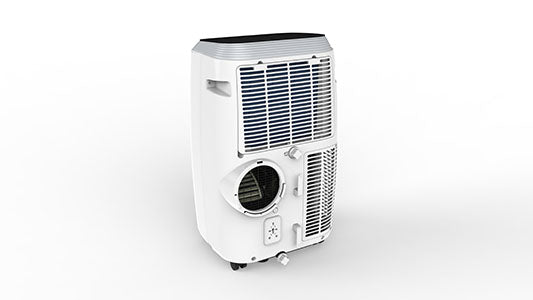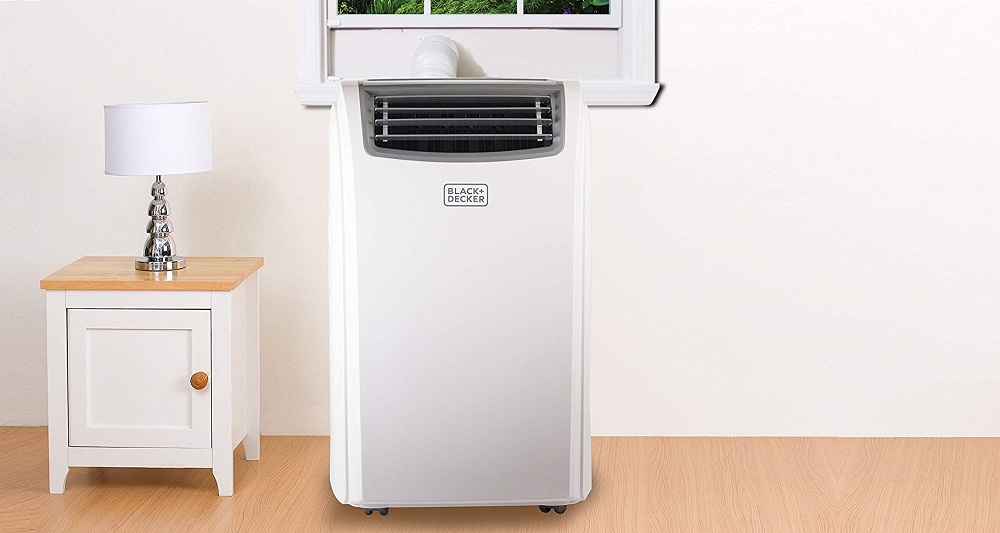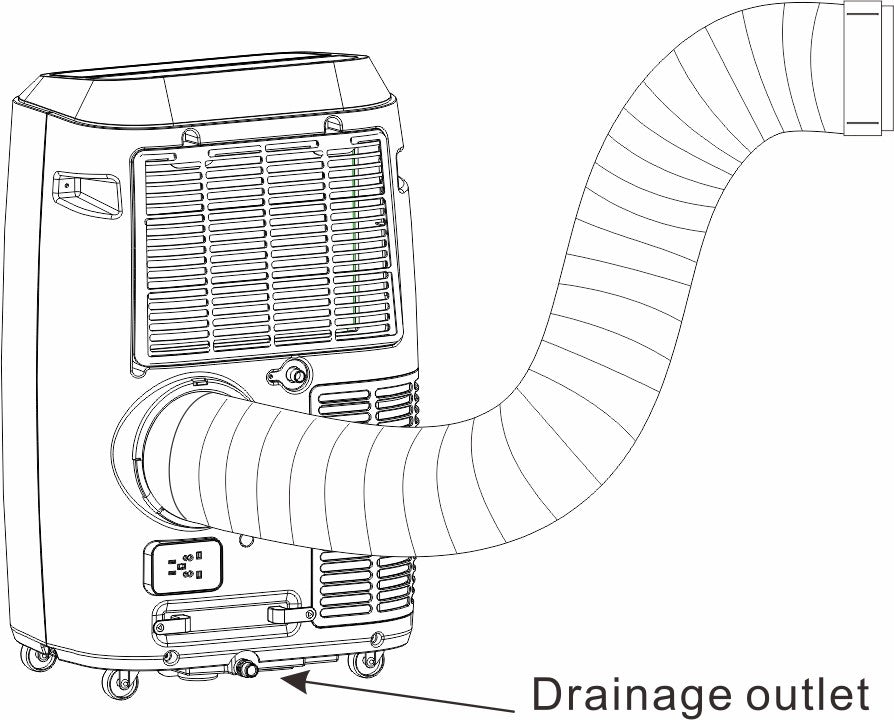Portable Air Conditioning Unit 12000 Btu

Are you considering a portable air conditioning unit to cool your space? A 12000 BTU (British Thermal Units) portable AC is a popular choice for medium-sized rooms, offering a balance of cooling power and portability. This guide provides a comprehensive overview of 12000 BTU portable AC units, covering their features, benefits, drawbacks, and factors to consider before making a purchase.
What is a BTU and Why Does it Matter?
BTU stands for British Thermal Units. It's the standard unit used to measure the amount of heat an air conditioner can remove from a room per hour. A higher BTU rating means the AC can cool a larger space more effectively. Think of it as the "strength" of the AC unit.
A 12000 BTU portable AC is generally suitable for rooms ranging from 400 to 550 square feet. However, this is just an estimate. Other factors, such as ceiling height, insulation, window size, and the amount of sunlight the room receives, can affect the cooling capacity needed.
Factors Affecting BTU Needs:
- Room Size: Larger rooms require more BTUs.
- Ceiling Height: Higher ceilings increase the volume of air that needs to be cooled.
- Insulation: Poor insulation allows heat to enter the room more easily, requiring a higher BTU unit.
- Window Size and Exposure: Large windows, especially those facing south or west, let in more sunlight and heat.
- Occupancy: More people in a room generate more heat.
- Heat-Generating Appliances: Computers, ovens, and other appliances produce heat.
If your room has many of these heat-generating factors, you might need a slightly higher BTU unit, even if it's within the recommended square footage range.
Understanding Portable Air Conditioner Components and How They Work
Portable air conditioners work on the same principle as window AC units and central AC systems. They use a refrigerant to absorb heat from the air inside the room and release it outside. Here's a breakdown of the key components:
- Compressor: The heart of the AC unit. It compresses the refrigerant gas, increasing its temperature and pressure. Think of it as a pump that circulates the refrigerant.
- Condenser: Located on the back of the unit, the condenser is where the hot refrigerant releases its heat to the outside air. A fan blows air over the condenser coils to facilitate this heat transfer.
- Expansion Valve: This valve lowers the pressure of the refrigerant, causing it to cool down rapidly.
- Evaporator: Located inside the unit, the evaporator is where the cold refrigerant absorbs heat from the room air. A fan blows air over the evaporator coils, cooling the air and circulating it back into the room.
- Refrigerant: The working fluid that absorbs and releases heat. Think of refrigerant as the 'blood' of the AC system, carrying heat from inside to outside.
- Exhaust Hose: This hose vents the hot air from the condenser to the outside, usually through a window.
- Control Panel: Allows you to adjust the temperature, fan speed, and other settings.
- Air Filter: Removes dust, pollen, and other particles from the air.
- Water Tank (or Drain Hose): Some portable ACs collect condensation. This water needs to be emptied periodically, either manually or through a drain hose. Self-evaporating models minimize the need for draining.
The basic process is: The AC unit sucks in warm air, cools it down using the refrigerant cycle, and blows the cool air back into the room. The heat extracted from the air is then vented outside through the exhaust hose.
Advantages of a 12000 BTU Portable Air Conditioner
Portable air conditioners offer several advantages over other cooling solutions:
- Portability: The most obvious benefit. You can easily move the AC unit from room to room as needed. This is ideal for cooling different spaces at different times, without the need for multiple window units or a central AC system.
- No Permanent Installation: Unlike window AC units, portable ACs don't require permanent installation. This makes them a great option for renters or those who don't want to alter their windows.
- Easy Setup: Setting up a portable AC unit is generally straightforward. Simply attach the exhaust hose to the unit and vent it through a window using the included window kit.
- Spot Cooling: Portable ACs allow you to cool specific areas of your home, rather than cooling the entire house. This can save energy and money.
- Supplemental Cooling: They can supplement an existing central AC system, providing extra cooling in rooms that tend to be warmer.
- Dehumidification: Many portable AC units also function as dehumidifiers, removing excess moisture from the air. This can improve comfort and reduce the risk of mold growth.
Disadvantages of a 12000 BTU Portable Air Conditioner
While portable ACs offer many benefits, they also have some drawbacks:
- Efficiency: Portable ACs are generally less energy-efficient than window AC units or central AC systems. This is because the motor that generates heat is inside the room and that heat leaks back into the room.
- Noise: Portable AC units can be noisier than other types of air conditioners. The compressor and fan are both located inside the unit, which can generate significant noise.
- Exhaust Hose: The exhaust hose needs to be vented outside, which can be a bit cumbersome. The window kit may not be a perfect fit for all windows, leading to some air leakage.
- Space Requirement: Portable AC units take up floor space, which can be a consideration in smaller rooms.
- Maintenance: Requires regular cleaning of the air filter and periodic draining of the water tank (for models that don't self-evaporate).
- Price: Can be more expensive than similarly sized window AC units.
Key Features to Look for in a 12000 BTU Portable AC
When choosing a 12000 BTU portable AC unit, consider these features:
- Energy Efficiency: Look for a model with a high Energy Efficiency Ratio (EER). A higher EER indicates better energy efficiency, meaning it will use less electricity to cool the same amount of space.
- Noise Level: Check the decibel (dB) rating. Lower dB ratings indicate quieter operation. Some models have a "quiet mode" for even quieter operation.
- Self-Evaporating Technology: This feature minimizes the need to drain the water tank. The AC unit evaporates the condensation and vents it out through the exhaust hose.
- Multiple Fan Speeds: Allows you to adjust the airflow to your preference.
- Adjustable Thermostat: Allows you to set the desired temperature.
- Timer: Allows you to program the AC unit to turn on or off at specific times.
- Remote Control: For convenient operation from across the room.
- Digital Display: For easy viewing of the temperature and settings.
- Air Filter: A washable and reusable air filter is preferable.
- Window Kit: Make sure the window kit is compatible with your window type.
- Smart Features: Some models offer smart features like Wi-Fi connectivity, allowing you to control the AC unit from your smartphone or with voice assistants.
- Dehumidifying Function: If you live in a humid climate, a dehumidifying function can be a valuable addition.
Tips for Using a 12000 BTU Portable AC Effectively
To get the most out of your 12000 BTU portable AC, follow these tips:
- Proper Venting: Ensure the exhaust hose is properly vented to the outside. Avoid kinks or bends in the hose, as this can restrict airflow.
- Seal the Window: Use weather stripping or tape to seal any gaps around the window kit. This will prevent hot air from leaking back into the room.
- Close Doors and Windows: Close doors and windows in the room you are cooling to prevent cool air from escaping.
- Use Curtains or Blinds: Close curtains or blinds during the day to block out sunlight and reduce heat gain.
- Place the AC Unit Strategically: Position the AC unit in a central location in the room, away from furniture or obstructions that could block airflow.
- Regular Maintenance: Clean the air filter regularly and drain the water tank (if applicable) as needed.
- Avoid Overloading Circuits: Plug the AC unit directly into a wall outlet, rather than using an extension cord.
Installation Considerations
Installing a 12000 BTU portable AC is generally simple. Most units come with a window kit that allows you to vent the exhaust hose through a window. However, here are some things to keep in mind:
- Window Type: Ensure the window kit is compatible with your window type (e.g., sliding window, casement window).
- Window Size: Measure your window to ensure the window kit is the right size.
- Sealing: Seal any gaps around the window kit to prevent air leakage.
- Alternative Venting Options: If you can't vent through a window, you may be able to vent through a wall or sliding glass door, but this may require additional modifications.
Is a 12000 BTU Portable AC Right For You?
A 12000 BTU portable AC is a good choice for cooling medium-sized rooms (400-550 square feet), especially if you value portability and ease of installation. However, consider the drawbacks, such as lower energy efficiency and noise levels, before making a decision. If you need to cool a larger space, or if energy efficiency is a top priority, you might want to consider a larger portable AC unit, a window AC unit, or a central AC system. Carefully weigh the pros and cons, and consider your specific needs and circumstances, to make the best choice for your home or office.










